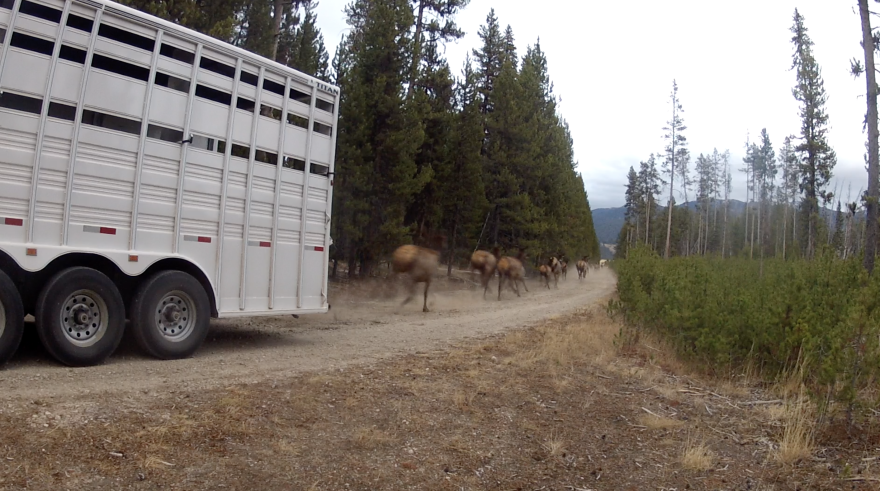Last week, as part of an effort to reduce elk numbers in the Magic Valley, Idaho Fish and Game employees wrangled cow and calf elk into livestock trailers in south central Idaho’s Camas Prairie to transport them to west central Idaho.
“It’s part of our long-term strategy to address some chronic and particularly expensive elk depredations in that Little Camas area,” said Mike McDonald, the wildlife manager for Idaho Fish and Game’s Magic Valley region.
Elk numbers have decreased in the backcountry and in North Idaho, but in recent years they've been more fruitful in south central Idaho, often exceeding state biologists' population targets. In that region of the state, the animals are increasingly found on agricultural lands.
“They spend the bulk of any given year on private property,” McDonald said.

That’s a problem, McDonald said, because Fish and Game is required by Idaho law to protect landowners from crop damage. Two years ago, depredations in the Magic Valley region, most of which were caused by elk destroying corn and alfalfa plants, forced the agency to pay $1.6 million.
Last year, Fish and Game killed 206 elk in southern Idaho as part of a study testing out various deterrents. A photo of multiple carcasses from the effort, which were processed and donated, was shared widely on Facebook, fueling anger among local hunters who weren’t notified that the agency that gives out hunting tags was killing big game on its own.
Biologists said they were employing a method called sharpshooting, used in conjunction with non-lethal methods, like trying to haze the elk out of the farm fields. They also said they couldn’t let hunters harvest the animals because they were on private property and mostly fed on the crops at night. Instead, the agency boosted elk tags in the region to try to bring the overall population down.
This year, Fish and Game has killed about 75 elk in the region by sharpshooting, but the agency is trying to focus more heavily on the non-lethal methods. One was the relocation effort that took place last week.

The elaborate effort involved a low-flying helicopter and all-terrain vehicles circling the sagebrush landscape and pushing herds of elk into a long, funnel-like trap. Once the animals ran into the zone, Fish and Game employees closed gates behind them, chanelling them through the corral to a trailer.
The agency wanted to trap and relocate up to 70 cow and calf elk, but over the course of three days, only managed to gather 16 and transport them to the Bear Valley in Valley County.
It was difficult, McDonald said, as the elk in the Camas area are skittish, having been subjected to various deterrent efforts over the past few months.
When the elk return from their wintering grounds in early spring, Fish and Game plans on orchestrating another trapping and relocation effort.
Find reporter Rachel Cohen on Twitter @racheld_cohen
Copyright 2020 Boise State Public Radio



